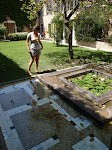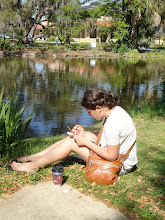


 we just came home from a beautiful trip to italia bella. as my second trip there, i knew what to expect on the whole, however i was unprepared for the beauty of venice. i had not been to venice or florence/tuscany before and i was stunned. of course.
we just came home from a beautiful trip to italia bella. as my second trip there, i knew what to expect on the whole, however i was unprepared for the beauty of venice. i had not been to venice or florence/tuscany before and i was stunned. of course. venice completely blew me away. i wish we could have spent more time there getting lost and finding interesting architectural features (which never end in the city with streets of water). there must have always been a need to find new ways to both navigate by foot and by boat. amazing little passageways, covered or uncovered, lead you from the expanse of the canal to the city within that is only pedestrian. at times 2 buildings would come together to leave a mere 2 feet of space for a pedestrian to slip through. it was like an architectural maze. the next second you would unknowingly come upon a normal sized piazza cleared away by the surrounding buildings. piazza san marco was without a doubt the largest and most grand, but the smaller more intimate ones, which were much more frequent, were just as perfect.
i almost forgot to mention the weathering and state of most every single building on the island. they appear as though they will crumble into the water at any moment, and yet not at the same time. the nature of the layers of facade falling away to reveal what once was the exterior is exquisite. what a place to discover one of the oldest beauties in the world...
as you can see from these photos...you need to see this at some point in your life.


















































